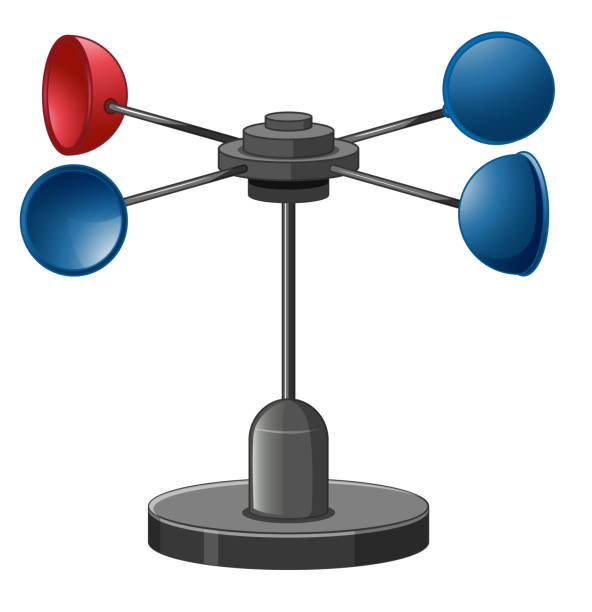Anemometer Innovations: The Most Up To Date Technology for Wind Speed Dimension
Anemometer Innovations: The Most Up To Date Technology for Wind Speed Dimension
Blog Article
Checking Out the Functions and Benefits of Anemometers for Weather Enthusiasts and Professionals
From cup anemometers to sonic anemometers, each type brings its one-of-a-kind collection of applications and benefits, shedding light on numerous facets of atmospheric problems. As we dig into the features and advantages of anemometers, a much deeper understanding emerges not just of prevailing weather sensations however also of the more comprehensive ramifications for sectors like wind power production and ecological research.
Relevance of Anemometers in Weather Condition Monitoring
Anemometers play an essential duty in weather surveillance by offering accurate measurements of wind speed, aiding in forecasting and understanding weather condition patterns. These instruments, varying from conventional cup anemometers to modern-day ultrasonic anemometers, are vital for meteorologists, scientists, and weather condition lovers alike.

Sorts Of Anemometers and Their Applications
The most usual kinds of anemometers include cup anemometers, vane anemometers, hot-wire anemometers, and ultrasonic anemometers. Mug anemometers are composed of three or 4 mugs mounted on straight arms that turn with the wind, determining its speed. Vane anemometers, on the various other hand, use an easily turning vane to line up with the wind direction, supplying both wind speed and direction measurements.
Each sort of anemometer has its one-of-a-kind advantages and applications. Cup anemometers are durable and suitable for basic weather tracking, while vane anemometers are favored for directional dimensions. Hot-wire anemometers are delicate to low air rates, making them optimal for interior atmospheres. Ultrasonic anemometers are non-intrusive and use high precision, usually utilized in study and specialized weather tracking applications. Recognizing the qualities and applications of each kind of anemometer is important for picking the most suitable tool for details weather checking demands.
Advantages of Making Use Of Anemometers in Projecting
In weather forecasting, the application of anemometers provides invaluable advantages for boosting the precision of climate projecting. Anemometers determine wind speed and direction, providing essential data for predicting climate patterns. By including wind information right into projecting designs, meteorologists can better recognize the motion of weather condition systems, anticipate modifications in weather, and issue extra specific projections.
Furthermore, anemometers play an important role in assessing potential climate dangers. Keeping an eye on wind speeds aids forecasters anticipate severe climate occasions such as typhoons, hurricanes, and wintertime storms with better accuracy. This very early warning system makes it possible for authorities to provide timely informs and execute essential safety and security steps, reducing the threats to life and residential or commercial property.
Additionally, anemometers aid in enhancing sustainable power manufacturing. By analyzing wind patterns, meteorologists can identify suitable locations for wind ranches and anticipate energy result, adding to the reliable generation of wind power.

Anemometers in Wind Power Production
Offered the essential function anemometers play in giving exact wind data for weather condition projecting and threat assessment, their relevance encompasses the realm of wind energy manufacturing. Anemometers are crucial visit homepage instruments in the field of wind energy, where the measurement of wind speed and direction is vital for determining the feasibility and efficiency of wind turbine setups. By precisely measuring wind speeds at varying heights, anemometers help enhance the placement and style of wind turbines to make the most of power output.
In wind farms, anemometers are purposefully put to gather real-time wind data that is utilized to examine the prospective power manufacturing of a website. This information contributes in determining the economic viability of wind power tasks and in projecting energy generation to ensure grid stability. Furthermore, anemometers aid in keeping an eye on wind conditions to optimize turbine efficiency, protect against damage from high winds, and make certain the safety of personnel functioning in the location of wind turbines.
Enhancing Weather Understanding With Anemometers

Anemometers play an essential function in improving our understanding of microclimates. These localized climate condition can vary considerably from broader local forecasts, making it necessary to have exact information for specific areas. anemometer. discover this info here By strategically placing anemometers in various areas, scientists can collect in-depth info on how wind acts in various surfaces, metropolitan environments, or bodies of water
Moreover, anemometers add to boosting weather condition projecting designs by offering real-time data on wind actions. This details is especially important for predicting extreme weather condition events, optimizing farming methods, and supporting sectors like air travel and maritime navigation. On the whole, anemometers are very useful instruments that enable us to dive much deeper into the intricacies of weather condition systems, ultimately leading to even more precise predictions and better-informed choices.
Verdict
To conclude, anemometers play an important role in weather condition monitoring and forecasting by gauging wind speed and instructions. They are vital devices utilized by weather fanatics and professionals to collect accurate information for predicting weather condition patterns and evaluating possible impacts. Anemometers likewise have applications in wind energy production, additional highlighting their significance in both weather forecasting and renewable resource fields. In general, anemometers add to improving our understanding of climate phenomena and boosting projecting abilities. anemometer.
From mug anemometers to sonic anemometers, each type brings its distinct set of applications and benefits, losing light on numerous aspects of atmospheric conditions. These instruments, varying from standard mug anemometers to modern-day ultrasonic anemometers, are crucial for meteorologists, researchers, and weather enthusiasts alike. The most common types of anemometers include cup anemometers, vane anemometers, hot-wire anemometers, and ultrasonic anemometers. Cup anemometers are ideal and durable for basic climate surveillance, while vane anemometers are preferred for directional dimensions. Anemometers are essential tools in the area of wind power, where the dimension of wind speed and direction is vital for establishing the usefulness and effectiveness of wind turbine installments.
Report this page